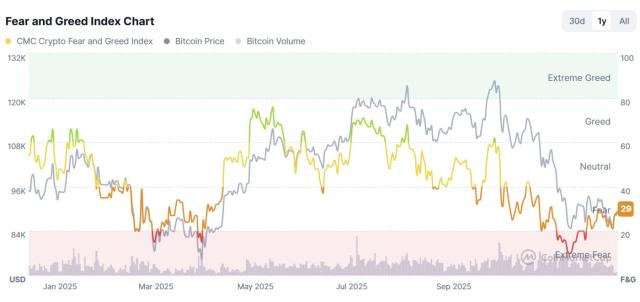In the volatile world of cryptocurrencies, stablecoins have emerged as a solution to reduce risk and maintain stable value. So what are stablecoins and why are they important? Let's find out with Followin in this article.
What is Stablecoin?
Stablecoins are a type of cryptocurrency that is designed to maintain a stable value over time. Unlike Bitcoin or Ethereum, whose value fluctuates constantly, stablecoins are usually pegged to a more stable asset such as fiat currency (USD, EUR), gold, or even other cryptocurrencies. Thanks to this mechanism, stablecoins help reduce the strong price volatility, which is one of the biggest drawbacks of the crypto market.
In addition to keeping their value stable, stablecoins act as a bridge between the traditional financial system and the cryptocurrency market. This makes it easy for investors to trade, pay, and protect their assets against strong market fluctuations.
Why Are Stablecoins Important?
Stablecoins are not just a trading tool but also bring many important benefits to both individuals and businesses.
Minimize Price Volatility
One of the biggest problems with the crypto market is high price volatility. Stablecoins help to overcome this problem by keeping the value stable, giving investors more peace of mind when trading and storing assets.
Efficient Payment Tools
Stablecoins are widely used to make daily transactions, online payments, international money transfers with high speed and lower costs than the traditional banking system.
Protecting Assets During Times of Turbulence
When the cryptocurrency market shows signs of decline, investors can transfer their assets to stablecoins to avoid the risk of devaluation without withdrawing money to their bank accounts.
The Crucial Foundation for DeFi
Stablecoins are an important platform for decentralized finance (DeFi) applications such as borrowing, lending, staking, and decentralized trading. Thanks to stablecoins, users can access financial services safely and efficiently.
Global Payment Innovation
Stablecoins help simplify cross-border transactions, reduce the cost of international money transfers, and bring transparency to financial transactions.
Popular Stablecoins
Stablecoins are classified based on the mechanism by which they guarantee their value, each with its own advantages and disadvantages.
Fiat and Real Asset Collateralized Stablecoins (RWA)
This is the most popular type of stablecoin, backed by fiat currencies like USD, EUR or real assets like government bonds to ensure stability.
For example: Tether (USDT), USD Coin (USDC), Eurite (EURI), First Digital USD (FDUSD), PayPal USD (PYUSD), TrueUSD (TUSD).
Crypto-Collateralized Stablecoins
This type of stablecoin uses cryptocurrency as collateral, often requiring collateral of an amount of assets larger than the value of the stablecoin to avoid liquidation risk.
For example: USDe, USDX, USDS/DAI.
Commodity-Backed Stablecoins
These stablecoins are backed by physical assets like gold, silver or oil to create stable value.
Examples: Tether Gold (XAUT), Pax Gold (PAXG).
Algorithmic Stablecoin
This type of stablecoin is not based on collateral but uses algorithms to maintain a stable value. This mechanism can be highly risky if the algorithm does not work effectively.
For example: USDD, Frax (FRAX).
Hybrid Stablecoin
Hybrid stablecoins combine different methods of securing value, which can be a mix of fiat, crypto, commodities, or other stablecoins.
For example: Frax (FRAX), CUSD (CUSD).
Risks to Be Aware of When Using Stablecoins
While stablecoins offer many benefits, there are still risks that investors need to consider.
Lost Peg
Stablecoins can lose their fixed value (1 USD) if the escrow system fails, also known as losing their peg.
Ineffective Price Holding Mechanism
Some algorithmic stablecoins have weak price-preserving mechanisms, which can cause their value to decline when faced with market pressure.
Black Swan Event
Unexpected events in the financial markets can affect the value of stablecoins, especially algorithmic stablecoins.
Legal Issues
Stablecoins are in a legal gray area in many countries. If regulations are tightened, some stablecoins could be severely affected.
Liquidity Imbalance
When there is an imbalance in the stablecoin liquidity pool, it can become difficult to withdraw or exchange stablecoins.
Lack of Insurance
Unlike bank deposits, stablecoins are not insured by governments, which can pose a risk if the issuing organization runs into financial problems.
Tips When Using Stablecoins
- Do your research: Learn about how each stablecoin works and the risks before investing.
- Diversification: Don't put all your capital into a single stablecoin to minimize risk.
- Stay informed: Follow news and market developments to make timely investment decisions.
Conclude
Stablecoins are an important part of the crypto ecosystem, helping to reduce volatility, facilitate transactions, and expand the application of blockchain in finance. However, to maximize the benefits of stablecoins, investors need to understand the operating mechanism and potential risks to make reasonable decisions.






